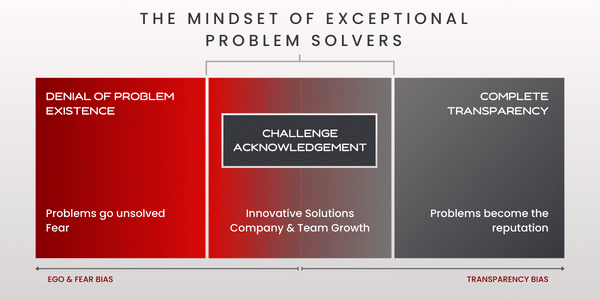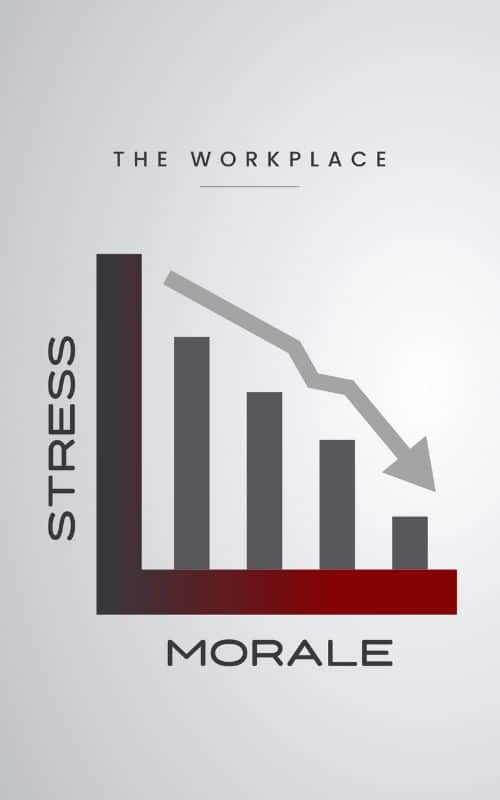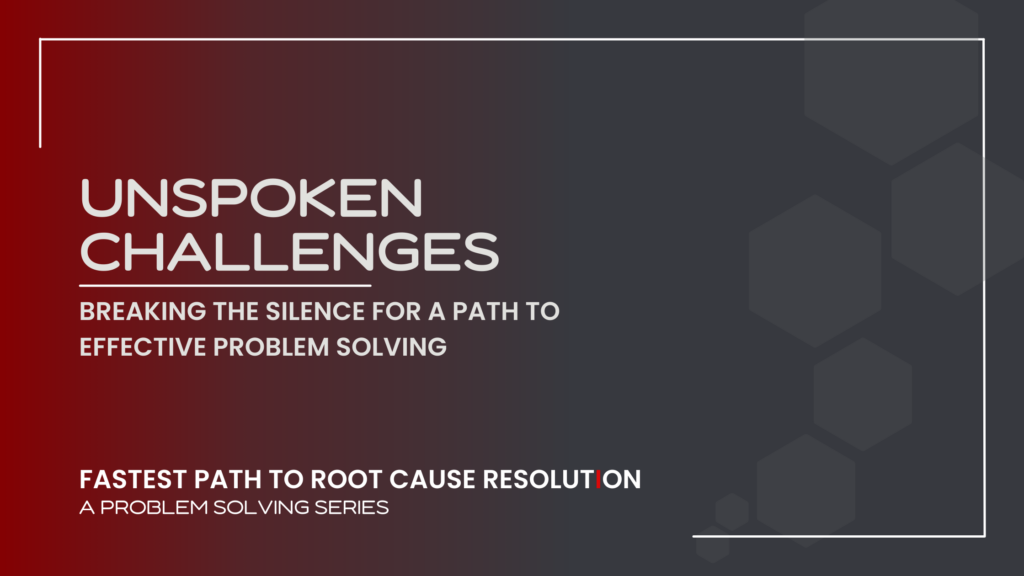How learning to problem solve can grow your company
In the fast-paced and competitive world of business, problems are inevitable. In reality, 85% of employees face conflicts at work, as reported in the CCP Global’s report “Workplace Conflict And How Businesses Can Harness It To Thrive.” From small startups to large corporations, every organization faces its fair share of challenges, yet many leaders are hesitant to openly discuss these issues—afraid of being perceived as weak or incapable.
The truth is, however, that the power of an organization lies in its approach to problem solving. Effective problem solving is not only critical to overcoming obstacles, but also serves as a catalyst for innovation and growth. So, regardless of their size or industry sector, businesses must continuously adapt and evolve—something that cannot be achieved without addressing and overcoming challenges.
It is time for manufacturing executives to embrace the unspoken challenges they face and acknowledge that the real measure of a company’s strength is not the absence of problems, but rather its ability to effectively recognize, navigate and overcome them. Here, we will explore the importance of problems in businesses, as well as the power of embracing challenges and using problem solving skills to drive success and growth in any industry.

The Paradox of Denial
Denial is probably the most common—yet counterproductive—approach to problem-solving. While it may seem benign, denying the existence of problems or avoiding their discussion can lead to an increase of issues. That’s because problems, when left unattended, tend to escalate. And, over time, unattended problems transform into more complex challenges— unaddressed, problems can critically harm a company’s reputation, finances and market presence.
Despite this, many executives fall prey to this paradox of denial, often driven by fear. The fear of appearing weak, incompetent or unprepared can cause hesitation to admit the existence of problems, but this fear-fueled denial can have detrimental consequences. By refusing to admit and address issues, we’re not only impeding problem-solving efforts, but also fostering a culture of avoidance and fear within the organization. In addition, this stifles innovation and growth, as team members may feel discouraged from openly discussing challenges and generating creative solutions.
Hence, the paradox of denial: the more leaders deny their problems, the larger these problems grow and the more their fear is validated. The courage to acknowledge challenges is the first step towards effective problem-solving.

The Power of Acknowledgment
As we can see, the first step in effectively addressing challenges lies in acknowledging their existence. Of course, this requires more than just admitting there’s a problem; it involves a significant shift in mindset. By accepting that challenges are an integral part of growth and development, leaders can start creating a candid culture where employees feel comfortable expressing concerns. And, they’ll create an open environment that acts as fertile ground for problem solving, with solutions often blossoming from the diverse thoughts and perspectives of team members.
Acknowledgment also plays a pivotal role in building trust and transparency, two key elements of successful leadership. By openly discussing issues, leaders demonstrate their honesty and commitment to improvement, which in turn earns the respect of stakeholders. It signals that the organization is dedicated to learning from its mistakes, rather than hiding them.
Additionally, acknowledging challenges promotes the development of open communication channels. Leaders who encourage their teams to voice their thoughts and concerns cultivate an atmosphere of mutual respect and collaboration. Such an environment not only aids in identifying and resolving issues, but also fosters a sense of unity and camaraderie; a shared sense of purpose that can motivate employees to proactively engage in problem-solving, contributing to the overall success of the organization.
The Problem-Solving Advantage
Emphasizing problem-solving offers a significant competitive edge in the rapidly changing business landscape. One key advantage that companies with a problem-solving focus possess is speed and efficiency. In a proactive environment of problem identification, issues are caught in their early stages, and this quicker detection—coupled with an already established problem-solving process (like Red X or TransaXional)—results in swift resolution of these issues through focused efforts. Thus, the overall efficiency of the organization is significantly improved as potential obstacles are nipped in the bud before they can escalate and disrupt the workflow.
Ultimately, embracing problem-solving is not merely about overcoming challenges. It is about leveraging those challenges as catalysts for growth, innovation, and improvement, paving the way for an organization to thrive, adapt, and stay ahead in an ever-evolving business environment.

The Road to Success
The road to success in problem-solving is not an overnight journey. Instead, it is a continuous commitment to fostering an environment that thrives on addressing challenges head-on. Like Ford, whose problem-solving initiated the assembly line and revolutionized autos, and Apple, which made computers common in homes, a company that tackles issues directly, sidestepping embarrassment or confusion, can make great strides in their industry.
There are four significant steps in this journey:
- Creating a focused leadership team – one with the tools to identify & select impactful projects and maintain that focus until projects are completed.
- Investing in employee training and development to enhance speed and efficiency of problem solving; the more well-equipped your team is, the better they will be at identifying and resolving issues.
- Embracing the power of diversity of thought. Different perspectives can bring fresh insights and unconventional solutions to complex problems. Having a diverse set of problem-solving tools/methods and knowing when to use each can increase your ability to solve complex problems fast.
- Setting up a structure to support and streamline problem solving efforts.

The Call to Action
They say that change is the only constant, but embracing it—especially when it means acknowledging your own problems—can still be daunting. But inaction is a much greater cost; when problems are ignored, they intensify, leading to stagnation and potentially, organizational failure.
As leaders, it’s time to inspire a new era of problem-solving leadership. A new era that starts with showing the world that acknowledging challenges is not a sign of weakness, but rather a commitment to improvement. A proactive approach to problem-solving doesn’t just address immediate challenges but also sets the stage for a problem-aware culture—where challenges are seen as opportunities for improvement, innovation, and growth, rather than obstacles to be feared. It helps to create a culture that becomes a competitive advantage in itself, attracting top talent, loyal customers, and industry recognition.
Conclusion
While traditional problem-solving approaches may have previously sufficed, in today’s complex, rapidly changing landscape, they are insufficient. Instead, companies like Tesla and OpenAI have demonstrated how embracing these challenges leads to breakthrough innovations.
Your industry is ripe for innovative leaders who see problems as opportunities. If you’re ready to change your mindset and learn how to embrace every challenge that comes your way, we can help you. Contact our team to start a conversation today.





